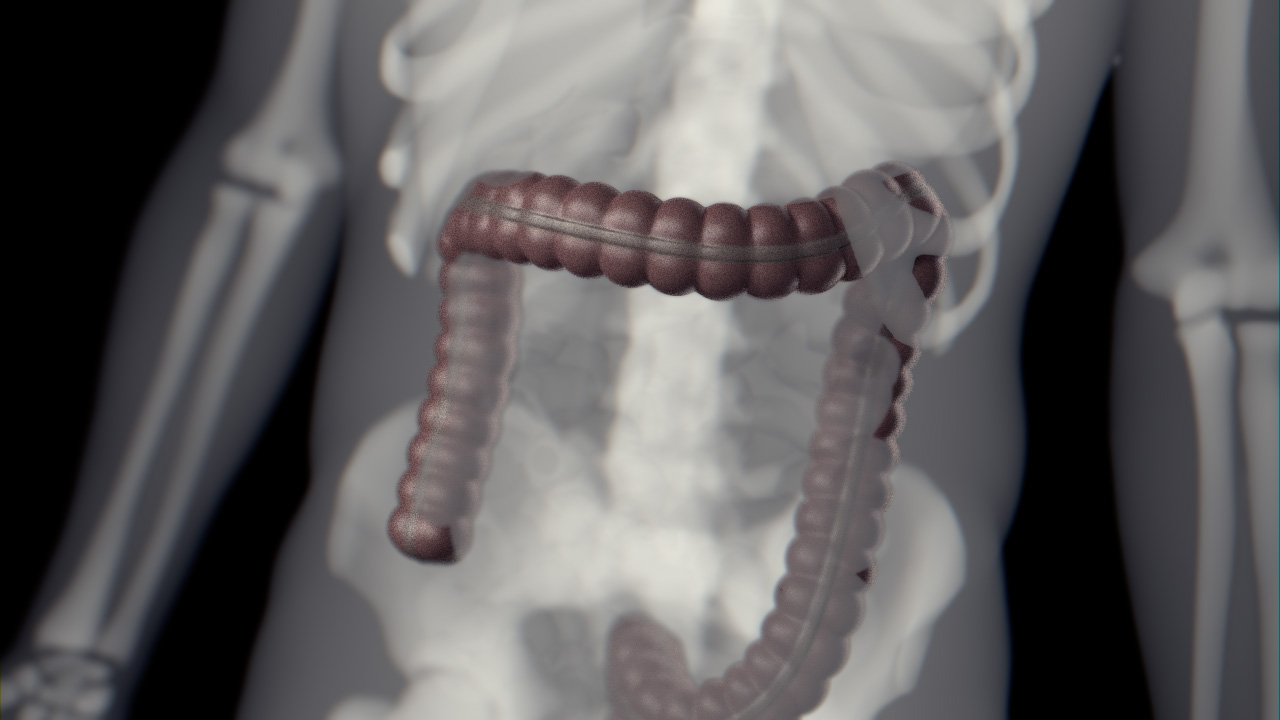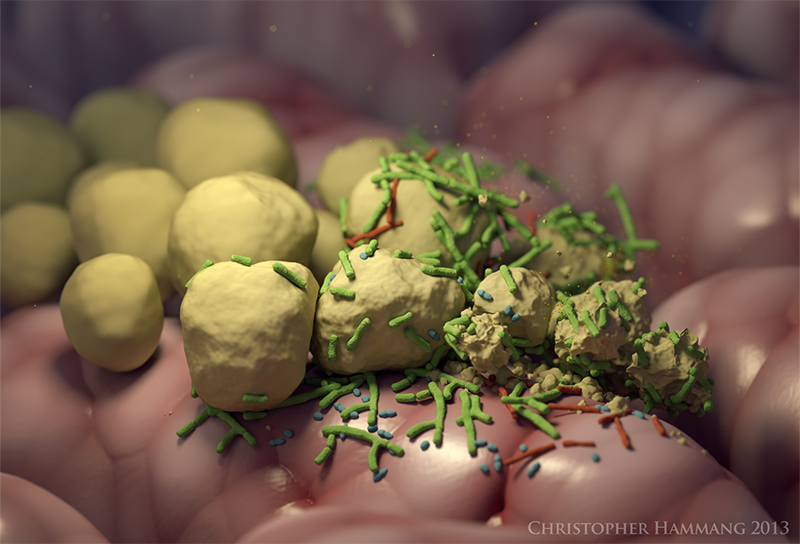By Arwen Cross
Australians eat more fibre than many other westerners but bowel cancer remains the second most common cancer in both Australian men and women. This is a paradox, because nutritionists agree that fibre fights bowel cancer and Australians eat a lot of it.
So what is it about our fibre intake that we need to change?
Eating a variety of fibre helps prevent bowel cancer. Image: Chris Hammang, VIZBIplus.
We need to eat a wider variety of fibre, according to current research. We’re doing a great job of eating roughage like wheat bran which promotes bowel regularity. What we need to eat more of is fermentable fibres, such as resistant starch.
Our research shows that eating resistant starch leads to positive changes in the bowel and could protect against the genetic damage implicated in bowel cancer.
Resistant starch promotes gut health by feeding the ‘good bacteria’ that live in our large bowel. These bacteria are sometimes called our microbiome. They can use resistant starch as food because it resists digestion in our small intestine, and moves on to the large bowel.
When the good bacteria in the large bowel ferment resistant starch, they make short chain fatty acids. One of these, called butyrate, supplies energy to the cells lining the large intestine (colonocytes), promoting their well being.
Good bacteria in the large bowel feed on resistant starch. Image: Chris Hammang, VIZBIplus.
If we don’t eat enough resistant starch our microbiome gets hungry and feeds on other things, releasing unfriendly chemicals instead of short chain fatty acids. Eating more resistant starch protects the bowel from the damage associated with having a hungry microbiome.
Feeding your hungry microbiome
We can feed our hungry microbiome by eating foods rich in resistant starch, e.g. lentils and beans, cooked and cooled potato, cold pasta salad, firm bananas, and certain wholegrains including products containing BARLEYmax™ grain. Eating a diet with a variety of fibre is a great way to show some love for your guts and keep them healthy.
The recommended intake of resistant starch is around 20 grams a day, which is almost four times greater than a typical western diet provides. Our researchers are working to create grain varieties with more resistant starch to make it easier to eat enough.
We hope that eating a wider variety of fibre, including resistant starch, will help us beat the Australian paradox and reduce the incidence of bowel cancer.
If you’d like to hear more about resistant starch, listen to David Topping on CSIROpod. June is Bowel Cancer Awareness Month.




6th December 2013 at 4:19 pm
Does reheating the potatoes/pasta effect the resistant starch? Cook, cool, reheat then eat…
9th December 2013 at 9:44 am
Resistant starch is found in cold cooked pasta, potatoes and rice. You can also get it from firm bananas and some wholegrains (including BARLEYmax) as well as legumes.
The effect of reheating cooled carbohydrates on resistant starch is complicated. Some studies of the effect in the scientific literature can be found using these links
http://www.ncbi.nlm.nih.gov/pubmed/19562607
http://www.eurekalert.org/pub_releases/2013-04/fi-rsc042513.php
5th July 2013 at 11:24 pm
Very informative article. Thanks Arwen